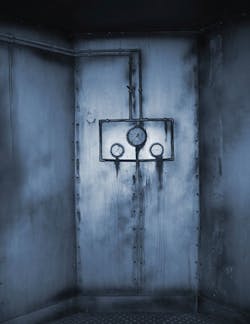How about gas-fired turbines or fired process heaters? If the answer is yes, then you need safety-instrumented systems. Safety instrumented systems (SISs) protect your equipment and personnel from unintended operation, ruptures, fires or explosions. These systems are a collection of safety instrumented functions (SIF). Each SIF exists to intervene when unsafe conditions are detected or excursions occur outside of acceptable parameters.SISs have important requirements dictated by U.S. Occupational Safety and Health Administration (OSHA) Process Safety Management and the ANSI/ISA84 standard promulgated by the American National Standards Institute and International Society of Automation. Your facility is required to have identified which SIS are necessary, the level of risk reduction needed and achieved by your system, and how the system is both tested and maintained.The typical project begins with assessing the safety instrumented functions required of a process or equipment currently served by the basic process control system, an outdated legacy pneumatic, relay or programmable logic controller (PLC) system. This is followed by an analysis using current industry good practices, resulting in a design and implementation that meets the required Safety Integrity Level (SIL) for each SIF.The various SIFs comprising the SIS are analyzed individually for required risk-reduction factor. Another way to state risk-reduction factor is its counterpart Safety Integrity Level. The SIS must be designed such that the process measurements, logic solver, and final elements exhibit high enough reliability to provide the needed risk reduction required by each SIF.SIS advantagesA SIS affords improved safety protection from faults and unit upsets because the SIS is much more fault-tolerant than the outdated legacy system it replaced. Further, the potential for bypassing the safety system is decreased, due to the inherent security that software access affords. Site Management of Change procedures are followed for any modification to a SIS.Maintenance of SISs is easier because these systems enjoy the benefit of nearly continuous self-diagnostics. When components suffer a fault, the system generates an alarm but continues performing its safety function, albeit in a manner different from when the system is “healthy.” Prior to the SIS era, a system would typically fail—either safely or unsafely—and cease to operate until repaired. By contrast, maintenance can usually service the SIS without loss of production or safety protection.Reliability of the logic solver is increased. Most conceivable single faults are detected safely with no process or safety impact. The typical redundant internal logic ensures that the logic itself can never change over time due to any processor faults. Future repairs and testing are limited to demonstrating that the input/output (I/O) signals are functioning correctly, without concern for the robustness of the logic.Fired process heaters pose many risks. These include flameout of a heater, rich furnace mixture from oxygen starvation and low process pass flow rate, among others. All of these hazards see reduced probability of occurrence with an appropriately installed SIS. These types of systems generally act to shut down a hazardous process or heater.Reactors include vessels that contain materials undergoing chemical reaction. The process risks inherent to reactors may include thermal runaway or mixture of regeneration streams with feed streams, which can result in severe overpressure and even catastrophic rupture. Reactors require varying types of protection, ranging from shutting a process down, to monitoring temperatures or flows, to valve interlocking in order to allow a process to function normally and safely.Gas turbine generators, full cogeneration systems, boilers and other combinations of combustion, steam, high voltage and high-speed rotating equipment present even more hazards to be mitigated by the SIS. The resulting design, implementation and testing process is even more rigorous than for process fired heaters and reactors.Alan Klingelhafer, [email protected], is Engineering Team Manager at Bay-Tec Engineering, Fairfield, Calif.
Subscribe to Automation World's RSS Feeds for Columns & Departments
About the Author
Sign up for our eNewsletters
Get the latest news and updates

Leaders relevant to this article:
